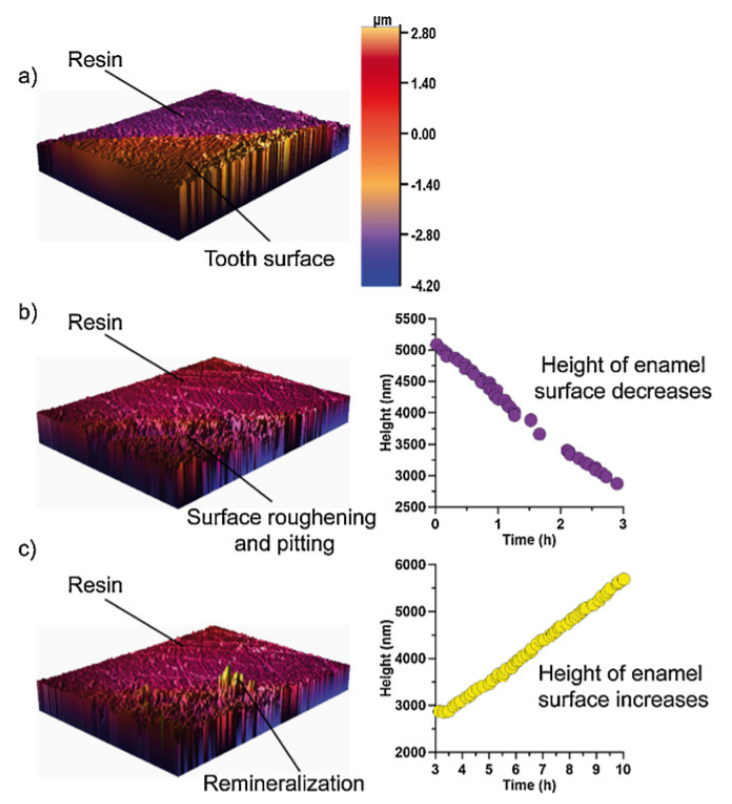Vertical scanning interferometry: A new method to quantify re-/de-mineralization dynamics of dental enamel
Abstract
Remineralization and demineralization are processes that compete in the oral environment. At this time, numerous therapeutic agents are being developed to promote remineralization (precipitation) or suppress demineralization (dissolution). To evaluate the relative efficacy of such treatments, there is a need for non-invasive, real-time, high-resolution quantifications of topographical changes occurring during demineralization and remineralization. Vertical scanning interferometry (VSI) is demonstrated to be a quantitative method to assess reactions, and topographical changes occurring on enamel surfaces following exposure to demineralizing, and remineralizing liquids. First, the dissolution rate of enamel was compared to that of synthetic hydroxyapatite (HAP) under acidic conditions (pH = 4). Second, VSI was used to compare the remineralization effects of F−-based and CCP-ACP agents. The former produced a remineralization rate of ≈349 nm/h, similar to simulated body fluid (SBF; concentration 4.6×) while the latter produced a remineralization rate of ≈55 nm/h, corresponding to 1.7× SBF. However, the precipitates formed by the CCP-ACP agent are found to demineralize 2.7× slower than that produced by its F−-counterpart. Based on this new VSI-based data, a remineralization factor (RF) and demineralization (DF) factor benchmarked, respectively, to 1× SBF and the demineralization rate of human enamel are suggested as figures of merit of therapeutic performance of dental treatments. Taken together, the outcomes offer new insights that can inform clinicians and researchers on the selection of remineralization strategies.
